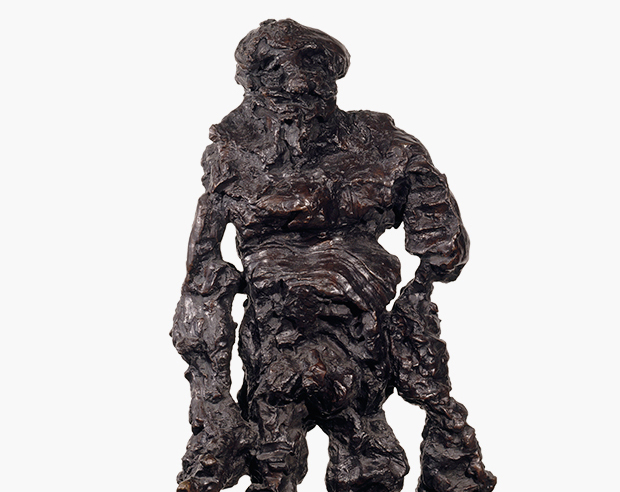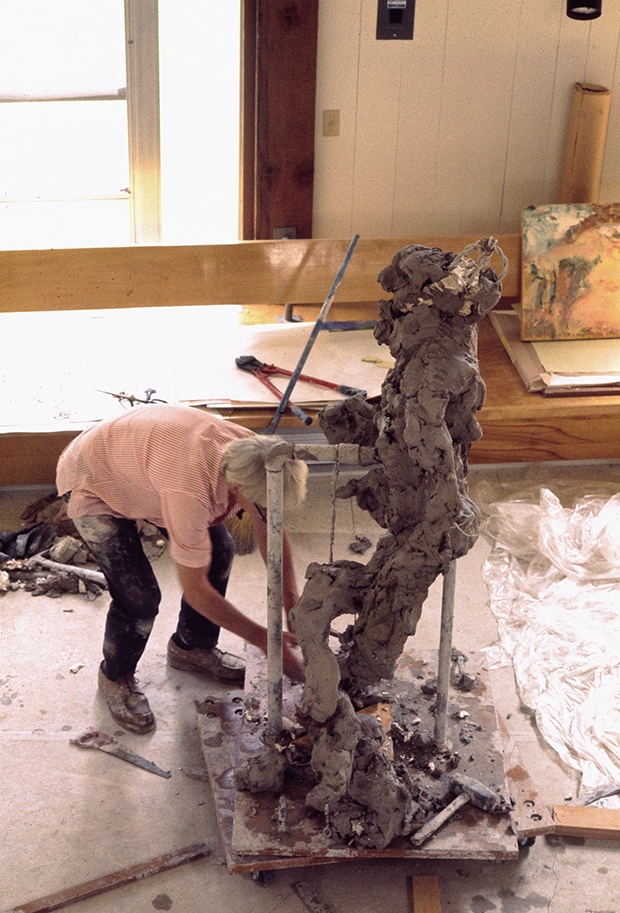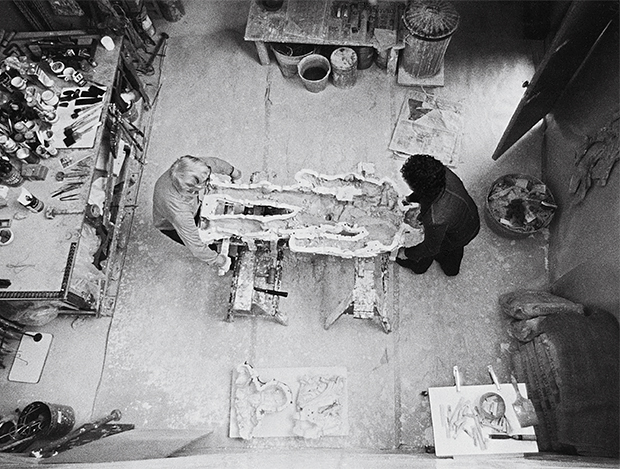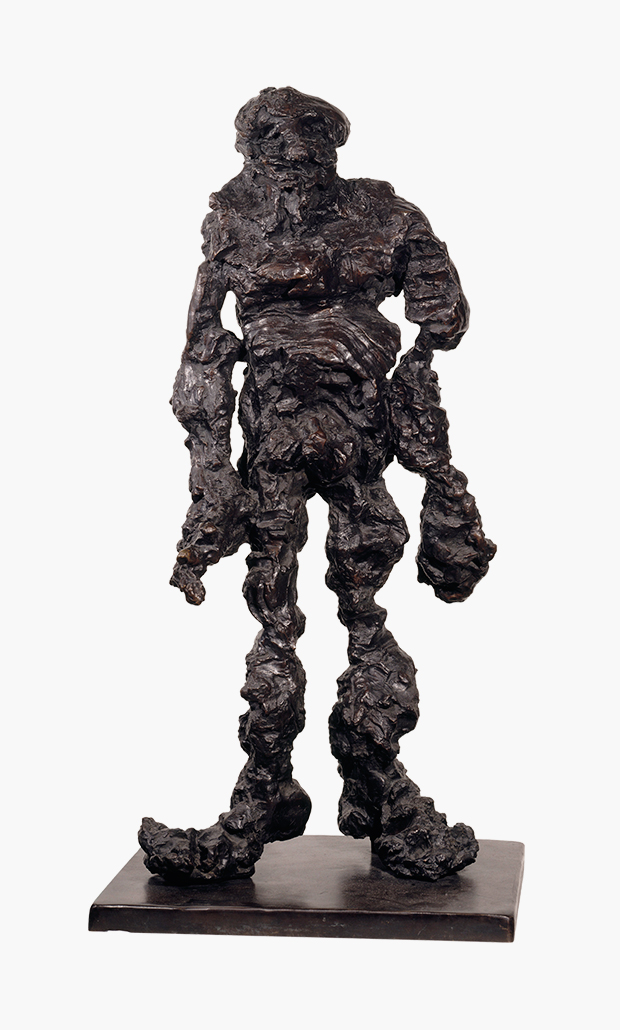
How Henry Moore inspired de Kooning’s Clamdigger
And why the abstract expressionist painter wore oversized workman's gloves to produce his life-size figure
Willem de Kooning is best known as a painter, having created both bold, abstract-expressionist works on canvas, and striking, highly sexual figurative paintings too. Yet a little-seen sculpture, which goes on sale at Christie’s in New York later this month, demonstrates how wonderful his three-dimensional work was too.
De Kooning had sculpted earlier in his career, yet he only began to work sincerely in bronze and clay at the age of 65, after spending most of July 1969 with the sculptor Herzl Emanuel in Rome. Returning to New York, he produced series of small-scale, mainly abstract works. Although the artist was not overly pleased with these sculptures, he considered enlarging the small-scale pieces after the British sculptor Henry Moore praised them, saying they had “such strength, such nervous energy.”

Indeed, having successfully scaled-up one of these works, de Kooning decided to execute new sculptures on larger scale, drawing inspiration from the men he saw digging for shellfish when he rode his bicycle out by the beaches of Montauk in Long Island.
In keeping with some of his paintings, these were broadly figurative works, with expressionistic whorls and surface details. Assisted by the fellow sculptor, David Christian, de Kooning constructed flexible armatures, allowing the artist model and remodel his clay.

In our current monograph, A Way of Living: the Art of de Kooning, author Judith Zilczer describes how the artist took to the medium of clay, delighting in the tactile experience of moulding and remoulding it. Interestingly, “de Kooning chose to wear oversize workman’s gloves while modelling, both to control the slippery clay and to exaggerate the expressionist markings of his figures as they kneaded and shaped the soft, wet sculptural medium.”
Although he would largely return to painting in later life, Clamdigger, one of 25 sculptures de Kooning produced between 1969 and 1974, remained in the artist’s personal collection, standing at the entrance to his studio until his death in 1997.

Some even suggest that this sculpture, de Kooning’s only full-sized male figure, could serve as a kind of ruddy, priapic self-portrait. Indeed, should we think of the act of clam digging both literally and figuratively? Zilczer believes so. “While the sculpture’s title ostensibly alluded to a fisherman figure-type that de Kooning had observed on the beaches of East Hampton, on another level the title coupled with the prominence of the male genitals creates a wry sexual innuendo.”
Something to bear in mind, when the piece goes under the hammer, at Christie’s post-war and contemporary art evening sale, on 12 November in Manhattan. For a richer understanding of this artist and his work, including this important sculpture, buy a copy of A Way of Living: the Art of de Kooning here.